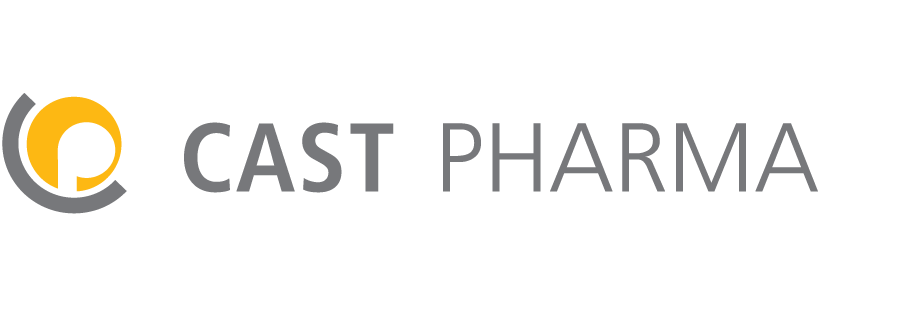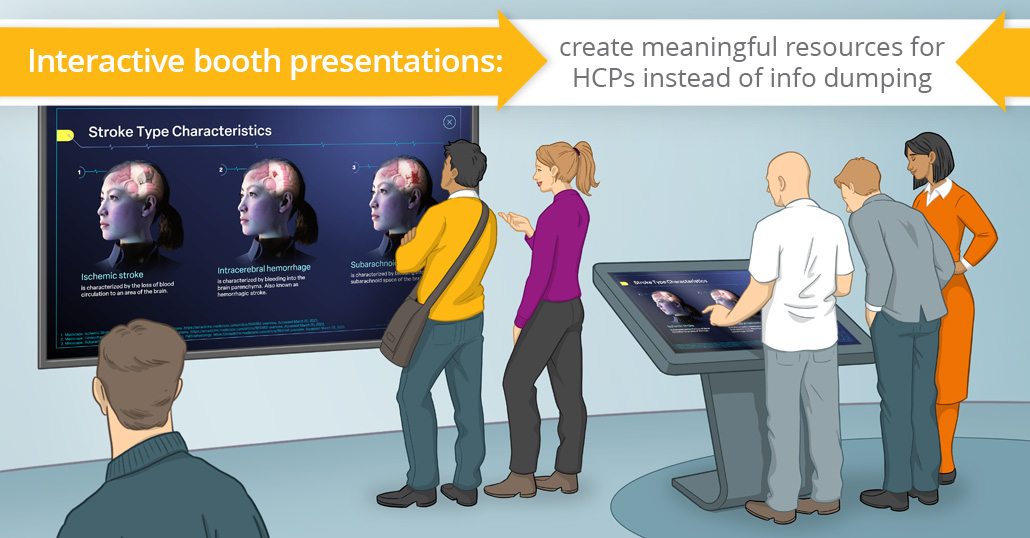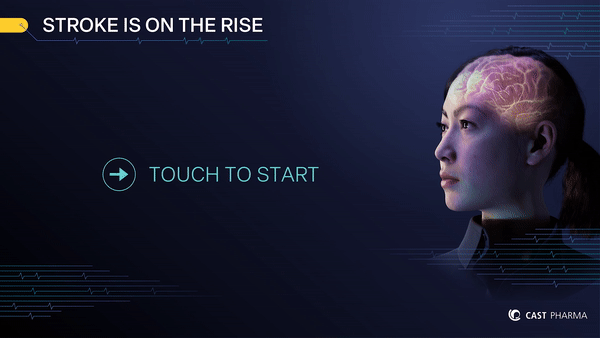Interactive booth presentations: create meaningful resources for HCPs instead of info dumping
You already know that getting HCPs to visit your medical booth is half the battle. But to keep them there and keep them coming back at future congresses, it’s important to make the experience as useful as possible for them.
What do HCPs want from a booth? Of course, it can vary, but research has found that HCPs highly value information on clinical trials, treatment guidelines, disease state, and KOL opinions in the therapeutic area. Perhaps surprisingly, slide decks are one of their preferred mediums for receiving this information next to infographics and videos.
Slide decks are best equipped for more extended interactions involving more comprehensive information. But this doesn’t mean that you should just throw a 120-slide PowerPoint on a touch screen monitor and leave people visiting your booth to dig through it. A booth presentation needs three basic features:
- Intuitive navigation
- Context for each slide
- Visuals that guide the audience through the presentation
Intuitive navigation that “just works”
A person visiting your booth needs to see immediately how the presentation works. With many different booths vying for their attention, they simply aren’t going to waste time reading elaborate user instructions. Navigation should be simple, with easily recognizable buttons. A bread crumb trail can give them a visual cue that there is more content if they swipe left or right.
Above all, they need to know that the monitor is a touch screen in the first place! The first slide seen by your booth visitors—your “start screen”—needs to have a prominent call to action that clearly invites them to interact, such as “touch here to learn more.” And speaking of a start screen, you need to have a “screen saver” feature (to use a dated term), that automatically returns to the start screen when no one is using the presentation. This ensures that people walking by your booth don’t just see a random slide which they may or may not recognize as interactive and instead see your start screen inviting them to engage with the useful medical content you’re offering.
Context for each slide without information overload
Since there won’t be a presenter explaining each slide, the context needs to be either directly on the slide as concise text boxes or as a voice-over that visitors can listen to on headphones. At the same time, you don’t want to make the presentation into a textbook or an audio book! If written the right way, headlines with a clear statement and concise bullets can offer enough context. Features like info boxes opened by clicking on a “+” or “i” button can also save some space on the slide while making sure that the user understands the content on each slide. Whether you’re presenting clinical trial results or the major pathways involved in a disease’s pathophysiology, there should be a coherent flow undergirded by powerful visuals. Well-designed visuals and the overall layout guide the visitor’s eye to the most important information on each slide. The size of text on the slide needs to be easily legible, taking into account how close to the screen the user will be standing and the size of the screen. And each topic should be supported by key visuals using recurring graphical motifs and a consistent look and feel. Rather than just a series of individual slides, your audience should have the feel of following a single narrative. Animation should build up the information step by step, thereby controlling the cognitive load for the audience and giving them what they need to know, when they need to know it. Overall, a medical booth presentation should create an experience that is intuitive, informative, and visually appealing. It can be an effective tool for supporting HCPs in staying updated and informed on the disease and therapeutic area. Easy-to-use and engaging presentations can help HCPs get information and resources they need to provide the best possible care to their patients.Visuals and animation that guide the audience through the presentation
Keeping HCPs informed for the long haul


